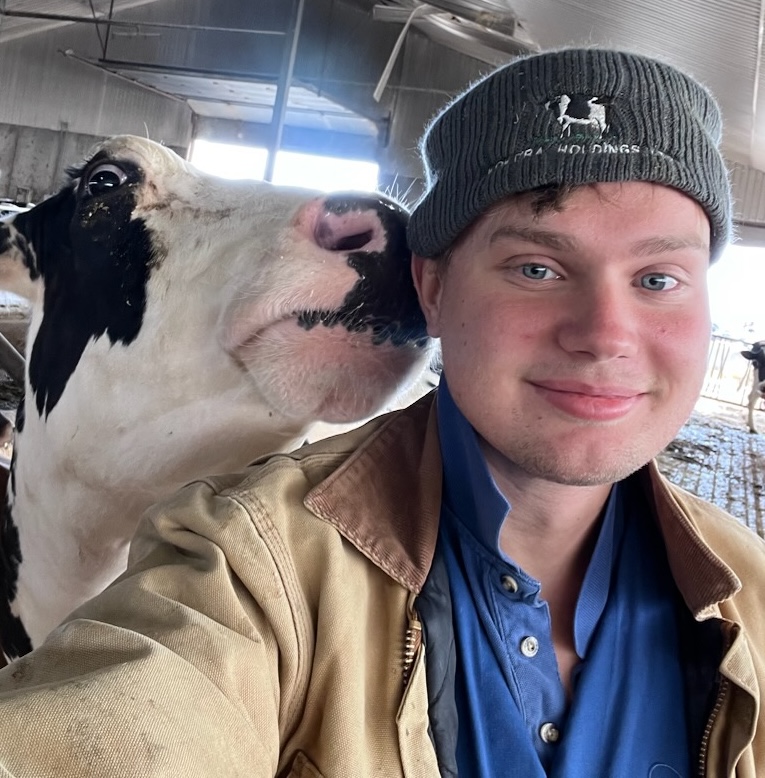PRICE TRANSPARENCY AT A GLANCE
BY TIM PARENT • PHOTO COURTESY OF STYN NIEUWENHUIS
On his family’s dairy farm just outside Red Deer, Styn Nieuwenhuis found it tiring and time consuming to price by-product feeds. He routinely called multiple brokers to determine current market prices for canola meal and distiller’s grain.
“It’s not like grain that’s traded on the commodity markets, or you can find public prices from all the elevators,” said Nieuwenhuis. “It’s hard to get pricing for all of these by-product feeds, especially on the protein side.”
It occurred to Nieuwenhuis that an app could solve this persistent problem. He envisioned a system that would display available products, their price and a 12-month price history to help farmers make purchase decisions.
To take FeedXchange from idea to its current beta test stage, Nieuwenhuis enrolled in programs with Platform Calgary, a non-profit organization that helps tech startups launch and grow. He also took part in one of the organization’s regular hackathons, in which each participating group competes to build a prototype for a tech startup. “The pitch had to be an idea that didn’t exist,” he said. “I pitched FeedXchange, built a team and a working prototype, and we somehow managed to win. I thought, ‘OK, maybe this is something, and I must keep going.’”
Though he holds an agriculture science diploma from Olds College, Nieuwenhuis didn’t have the software experience to launch the app. SVG Ventures, which supports ag startups, introduced him to Josh Hawley, a 25-year IT veteran. Located in Gwynne, Hawley operates Feedware Systems, which develops custom software products and services for feed mills. The two agreed to form a partnership and used existing Feedware software to develop the FeedXchange platform.
Nieuwenhuis describes the by-product feeds market as opaque. FeedXchange gives farmers, the ability to see what others are paying and to view historical price trends that can significantly influence purchase decisions and allows them to manage expenses.
The app also displays the source of each product. Such traceability is important to the farmers Nieuwenhuis spoke with while carrying out market research. “One canola meal-crushing plant will have a different process than others,” he said. “Some use chemical solvents, others are cold pressed and have different nutritional values.”
He admitted it’s been a balancing act to build an app that will please both farmers and feed brokers. “If you can tell a farmer, ‘I’ll save you money,’ they’re sold. The main goal of farming is to manage your input costs.” Brokers can use the app to manage their work more efficiently. “Brokers need a tool to manage their trades and logistics because they’re spending their whole day on the phone. If they can put up a listing for today’s price, that saves them a lot of time. We’re also trying to provide them with tools to revamp their bookkeeping and improve the customer experience because right now, brokers are using Excel sheets and notebooks.”
With some additional fine tuning to complete, Nieuwenhuis and Hawley aim to launch the app in summer 2024. As the final push is underway, Nieuwenhuis offers practical advice for fellow agriculture entrepreneurs and innovators who may not feel confident they have the skills to move forward. “Don’t be intimidated. There are so many resources available—venture capital, government advisory services and accelerators. Make use of them. Be sure to network, go to pitch events and if you have an idea, reach out to people. If you don’t have the skill set to build something, there are plenty of people you can partner with. Don’t wait around, just get to it.”







Comments